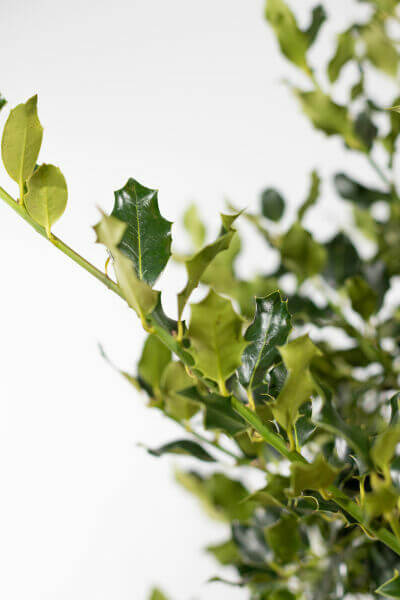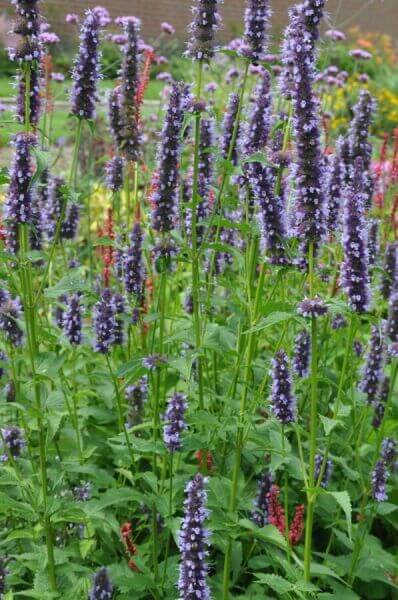Best Hedging Plants For Terrace Gardens
Best Hedging Plants For Terrace Gardens
Blog Article
Tall Hedging Plants For Maximum Privacy
Improve your garden's attraction with rich hedge varieties such as Yew (Taxus), Thuja, Laurel, Photinia, and Bamboo, commemorated for their structural stability and environmental advantages.
Yew and Thuja offer evergreen coverage and winter resilience, while Laurel provides quick growth and broad, aromatic leaves.
Photinia adds seasonal beauty with its dynamic red foliage, and Bamboo provides a low-maintenance, serene ambiance.
These hedges enhance air quality, decrease sound, and develop tranquil, private areas.
Proper planting, spacing, and maintenance guarantee energetic growth and eco-friendly harmony.
Explore how these rich ranges can elevate your garden's charm and well-being.
Key Takeaways
Change Your Garden With Lush Hedge Varieties
- Select Yew for its dense, evergreen development and unparalleled longevity.
- Opt for Laurel for its quick growth and broad leaves, making sure quick privacy.
- Select Photinia for its dynamic seasonal foliage, which turns a striking dark red.
- Make use of Bamboo for a low-maintenance, winter-hardy hedge with visual appeal.
- Space plants 2-3 per meter and prune frequently for ideal growth and health.
Popular Hedge Plants
When transforming a garden with rich hedge ranges, it's important to consider popular hedge plants such as Yew, Thuja, Laurel, and Photinia due to their distinct qualities and advantages.
Yew (Taxus) is highly esteemed for its longevity and dense, green growth, making it a prime choice for enduring landscapes.
Thuja is noted for its evergreen foliage and robust winter season resilience.
Photinia adds seasonal vibrancy with red leaves that darken over time, creating vibrant visual appeal.
Laurel uses quick development and aromatic, broad leaves, suitable for quick privacy.
In Addition, Bamboo is an exceptional option for ambiance, providing a low-maintenance, winter-hardy alternative that boosts the garden's visual with its elegant, swaying walking canes.
These choices accommodate a variety of horticultural requirements and preferences.
Benefits of Garden Hedges
Garden hedges use a wide variety of benefits, making them a valuable addition to any landscape. These natural barriers are cost-effective to carry out and offer significant wind defense, improving air circulation and adding to noise decrease. The dense foliage of hedges like Thuja and Beech guarantees privacy by obstructing presence, producing a secluded and peaceful environment.
Hedges also play an important role in microclimate guideline, providing a steady environment that fosters plant development and reduces temperature level changes. Their detailed leaf structures filter contaminants, enhancing air quality and contributing to a healthier garden environment.
Moreover, hedges stand out in sound reduction, taking in and deflecting acoustic waves to lower ambient sound levels. This dual functionality of supplying both visual and acoustic personal privacy boosts the overall serenity and visual appeal of any garden.
Planting and Upkeep Tips
For a successful hedge, meticulous preparation of the planting location is crucial. Make sure the soil has proper pH and drainage to support strong root development.
Space the plants properly for the selected types. Water the hedge regularly throughout its preliminary development phase, adjusting as needed with seasonal changes.
Implement a systematic pest control and disease prevention strategy, using natural or chemical treatments when necessary. Regularly inspect for aphids, mites, and fungal infections.
Apply mulch to retain moisture and reduce weeds. Seasonal pruning promotes thick development and air blood circulation, necessary for plant health.
Following these standards will assist you cultivate a dynamic, well-kept hedge that enhances the beauty of your garden.
Spacing and Cutting Standards
Spacing and Cutting Standards
Correct spacing and cutting are important for cultivating healthy, visually appealing hedges. Adequate spacing makes sure each plant gets adequate nutrients, light, and airflow.
Follow these standards for ideal hedge maintenance:
- Spacing: Position hedge plants 2-3 plants per meter to motivate robust development.
- Pruning Techniques: Routine pruning is essential for preserving wanted hedge height and shape. Trim new development in summertime and cut back older wood throughout winter.
- Seasonal Care: Change trimming schedules and methods according to seasonal requirements to guarantee plant health.
- Hedge Height: Frequently screen and cut to preserve the desired hedge height and accomplish consistent aesthetic appeals.
Abiding by these steps will ensure your hedge thrives, improving both the appeal and performance of your garden.
Choosing the Right Hedge
Selecting the Right Hedge
Selecting the suitable hedge includes evaluating elements such as fully grown height, foliage density, and ecological resilience. Effective hedge plant choice requires comprehending each types' growth qualities and site-specific versatility.
For instance, Yew (Taxus) offers outstanding durability and thick development, while Thuja is notable for its winter durability. In addition, considering upkeep requirements is crucial; fast-growing species like Laurel or Privet demand routine trimming, whereas low-maintenance choices like Bamboo or Ivy may be preferable for those seeking minimal upkeep.
Ecological elements such as soil type, light schedule, and wetness conditions need to also direct the selection process. This cautious method guarantees the selected hedges will prosper, offering both functional and aesthetic benefits to the garden landscape.
Shipment and Planting Advice
To guarantee your hedge plants grow, they must be provided by specialized carriers and planted without delay upon arrival.
Follow these necessary actions for successful planting:
- Soil Preparation: Enrich the soil with organic matter to enhance drain and nutrient content.
- Planting Depth: Create a trench two times the width and equivalent to the depth of the root ball.
- Watering Techniques: Water thoroughly after planting, keeping the soil regularly moist however not filled.
- Mulching: Apply a layer of mulch to retain wetness and suppress weeds.
Customer Assistance and Service
Provided the essential function of timely assistance in horticultural pursuits, our consumer support group is offered six days a week through telephone, e-mail, and social media to use professional advice and quickly resolve any issues. Their commitment to quick action times guarantees client complete satisfaction by resolving queries related to plant health, ideal planting methods, and maintenance schedules.

Action Time
-----------------
Within 24 hr
Social Media
This extensive support system, enhanced by an outstanding 9.3/ 10 customer ranking, highlights our dedication to enhancing the gardening experience for every customer.
Often Asked Questions
The Length Of Time Does It Take for Hedge Plants to Develop?
Hedge plants normally require one to three years to end up being completely developed, with the precise period varying by types and growing conditions.
Effective care throughout this critical period is important for robust growth. Constant watering, vigilant weed control, and proper fertilizer application are pivotal in promoting strong root advancement.
For instance, fast-growing species like Laurel might develop faster, while slower-growing ranges such as Yew may take longer. Diligent upkeep speeds up the facility process, resulting in healthy and dense hedges.
What Are the very best Hedge Plants for Personal Privacy?
The concern of the very best hedge plants for privacy includes examining evergreen and deciduous alternatives.
Evergreen hedges like Thuja, Laurel, and Cypress provide year-round coverage, making sure constant privacy.
In contrast, deciduous hedges such as Beech provide seasonal privacy, shedding leaves in chillier months.
Secret maintenance suggestions for privacy hedges include regular trimming, fertilizing in spring, and appropriate spacing-- usually 2 to 3 plants per meter.
In addition, constant watering and thorough weed elimination are vital for promoting healthy, thick development.
Can Hedge Plants Draw In Wildlife to My Garden?
Yes, hedge plants can draw in wildlife to your garden by offering vital advantages like shelter, food, and nesting websites, therefore boosting regional biodiversity. For example, yew, holly, and laurel are exceptional for drawing in birds, while ivy supports a variety of bugs.
Nevertheless, it is necessary to note that there are some drawbacks, such as increased upkeep to handle pests and regular maintenance. Carefully selecting and keeping hedge ranges can help stabilize these advantages and disadvantages, ultimately fostering a sustainable and vibrant environment in your garden.
Exist Any Flowering Hedge Plants Available?
Yes, there are flowering hedge plants readily available that can improve the appeal of your garden.
For instance, Elaeagnus, also referred to as Olive Willow, produces fragrant white flowers in the fall, including a touch of elegance.
Photinia, another popular option, showcases dynamic red leaves that mature into an abundant green, creating a vibrant visual effect throughout the seasons.
To make sure these plants flourish, it's important to practice appropriate pruning strategies and seasonal maintenance, such as cutting brand-new growth in the summer season and cutting back in the winter.
These procedures will help preserve the health and visual appeal of your flowering hedges.
How Do I Avoid Pests in My Hedge Plants?
To prevent pests in hedge plants, use natural pest control techniques and keep proper hedge care. Introduce helpful insects like ladybugs, which take advantage of damaging pests, to create a balanced environment.
Frequently here inspect your hedges for signs of invasion and promptly eliminate any afflicted parts to avoid the spread. Ensure the health of your hedges by applying balanced fertilizers and offering appropriate water.
Make use of mulching to maintain soil wetness and correct spacing to reduce plant stress and promote robust development. These practices jointly assist in minimizing bug issues and preserving a healthy hedge.
Conclusion
In essence, selecting the best hedge varieties such as Yew, Thuja, and Laurel can transform any garden into a peaceful haven. These plants provide year-round greenery, boost visual appeal, and deal practical benefits like noise decrease and wind protection.
Appropriate planting techniques, accurate spacing, constant watering, and seasonal trimming are vital for optimum development.
Reliable shipment services and expert customer support make sure a smooth experience from purchase to planting, making it simpler than ever to raise your outside space.
Garden hedges provide a plethora of advantages, making them an important addition to any landscape. These natural barriers are economical to implement and provide significant wind defense, improving air circulation and contributing to sound reduction. The thick foliage of hedges like Thuja and Beech guarantees privacy by blocking visibility, producing a secluded and tranquil environment.

Pruning Strategies: Routine pruning is vital for preserving wanted hedge height and shape. Cut brand-new development in summertime and cut back older wood during winter.
Report this page